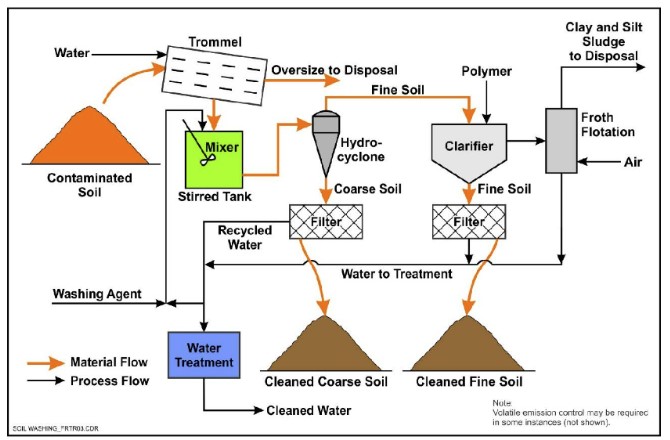Effective PFAS Waste Management in Agricultural Environments
Effective PFAS Waste Management in Agricultural Environments
Blog Article
Cutting-edge PFAS Therapy Solutions for Safer Water
The boosting prevalence of PFAS contamination in water supplies demands a vital assessment of innovative therapy services. Advanced filtration innovations and novel chemical therapies existing promising opportunities for decreasing these relentless contaminants. Furthermore, arising bioremediation techniques use an even more sustainable method to tackling PFAS obstacles. As regulative frameworks continue to adjust, recognizing the effectiveness and scalability of these options comes to be vital. What effects do these developments hold for public wellness and ecological remediation, and exactly how can stakeholders properly implement them in diverse contexts?
Summary of PFAS Contamination
PFAS contamination has become a significant ecological and public health issue. Per- and polyfluoroalkyl compounds (PFAS) are a team of synthetic chemicals known for their determination in the setting and body, leading them to be commonly described as "forever chemicals." These substances have actually been widely used in various markets, consisting of firefighting foams, water-repellent materials, and food packaging, primarily due to their water- and grease-resistant properties.
The widespread usage of PFAS has resulted in their detection in dirt, water products, and also in the blood of people and animals. Studies have connected PFAS direct exposure to many health and wellness problems, consisting of developing results in babies, immune system dysfunction, and different types of cancer. In addition, the ecological perseverance of these compounds complicates their degradation and elimination, increasing issues about lasting environmental impacts.
Governing bodies are progressively carrying out strict standards to keep an eye on and minimize PFAS levels in alcohol consumption water and other ecological tools. As understanding of PFAS contamination grows, it has actually come to be necessary for communities and markets to seek efficient therapy options to alleviate exposure and secure public health and wellness.
Advanced Filtering Technologies
As the urgency to resolve PFAS contamination increases, advanced purification innovations have emerged as a pivotal element in the removal efforts focused on eliminating these relentless chemicals from water sources. These modern technologies take advantage of sophisticated devices to efficiently target and record PFAS compounds, which are infamously resistant to traditional therapy approaches.
One of the most appealing methods is the use of granular triggered carbon (GAC), which adsorbs PFAS molecules as a result of its high surface and porous structure. This approach has been commonly executed in both metropolitan and industrial setups, showing significant decreases in PFAS concentrations. In addition, ion exchange materials have acquired grip, especially developed to uniquely bind PFAS ions from water, hence facilitating their elimination.
Membrane filtering modern technologies, such as reverse osmosis and nanofiltration, also reveal efficiency in PFAS removal by literally separating impurities from water - pfas management. These systems can accomplish high degrees of purity, making them suitable for drinking water applications
Chemical Therapy Innovations
Many chemical treatment developments are being checked out to successfully attend to PFAS contamination in water products. One encouraging strategy entails using innovative oxidation procedures (AOPs), which make use of effective oxidants such as ozone, hydrogen peroxide, or chlorine dioxide incorporated with UV light to damage down PFAS substances right into less hazardous substances. This approach has actually shown efficacy in laboratory setups, showing prospective for scalability in real-world applications.
An additional cutting-edge approach is the advancement of ion-exchange materials especially created to target PFAS. These resins can selectively adsorb PFAS substances from water, permitting for their elimination during treatment procedures. Recent developments have boosted the effectiveness and capacity of these materials, making them a desirable choice for water treatment centers.
Furthermore, researchers are exploring using chemical agents like persulfate and ferrous ions to enhance the degradation of PFAS in infected water. These representatives can induce chain reaction that assist in the malfunction of consistent PFAS substances.
Emerging Bioremediation Techniques
Current innovations in chemical treatment innovations have get more actually led the means for checking out bioremediation techniques as a sensible option for addressing PFAS contamination. Bioremediation uses the all-natural metabolic processes of microorganisms to weaken or transform pollutants, making it an appealing strategy for taking on relentless pollutants like PFAS.
Arising strategies in bioremediation include making use of genetically engineered bacteria that can specifically target and damage down PFAS compounds. These microbial pressures are being developed for their enhanced deterioration capacities, enhancing the efficiency of the remediation procedure. Furthermore, researchers are exploring the capacity of plant-assisted bioremediation, where particular plant types might uptake and sequester PFAS from infected soil and water.
One more promising technique is the application of bioaugmentation, which involves Get More Info introducing beneficial microorganisms into infected environments to improve the degradation of PFAS. This approach can assist in much faster remediation timelines and enhance general effectiveness.

Regulatory Frameworks and Specifications
A thorough regulative framework is crucial for effectively handling PFAS contamination and making certain public health and wellness defense. The increasing recognition of per- and polyfluoroalkyl materials (PFAS) as environmental contaminants has actually triggered different government and state companies to establish requirements that regulate their existence in water products. The United State Environmental Defense Company (EPA) has established health and wellness advisories and is pursuing setting enforceable restrictions for PFAS in drinking water.
State-level regulations vary considerably, my link with some states adopting stricter standards than those proposed by the EPA. These guidelines frequently consist of optimum contaminant levels (MCLs) for specific PFAS substances, monitoring requirements, and reporting obligations for water energies. Furthermore, emerging structures concentrate on the remediation of contaminated websites, highlighting the need for reliable therapy innovations.

Conclusion
In conclusion, the growth and execution of cutting-edge PFAS therapy options are important for dealing with the pervasive issue of water contamination. Advanced purification modern technologies, chemical therapies, and emerging bioremediation techniques jointly provide a diverse method to efficiently reduce and weaken PFAS degrees. As regulative frameworks continue to advance, incorporating these modern technologies will certainly be necessary to secure public health and wellness and restore the integrity of infected water sources, ultimately contributing to a cleaner and more secure environment.
Report this page